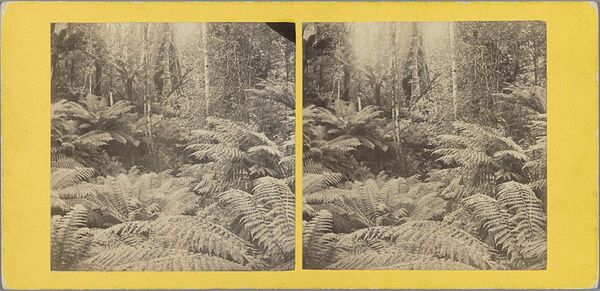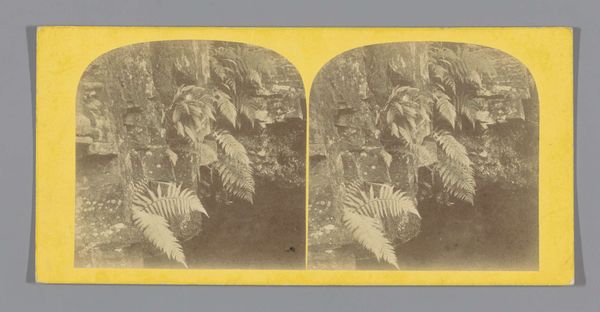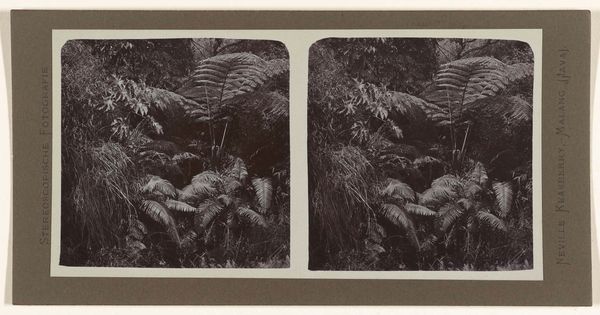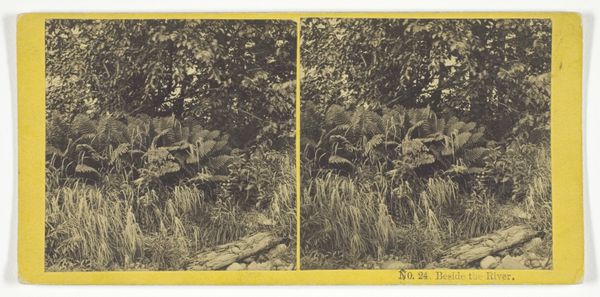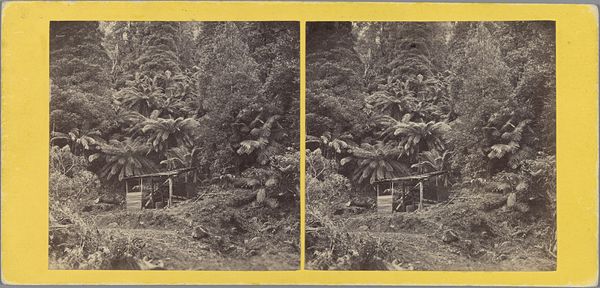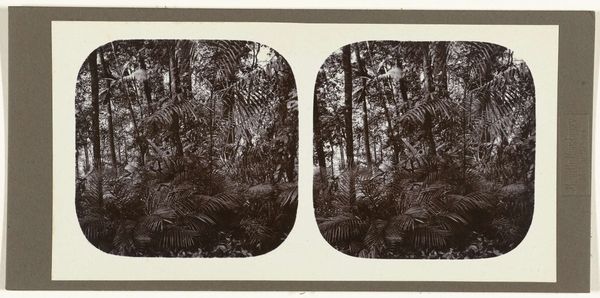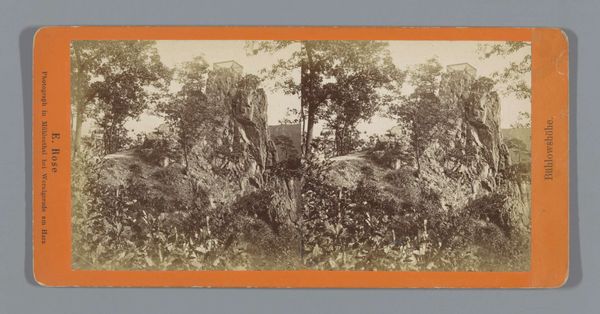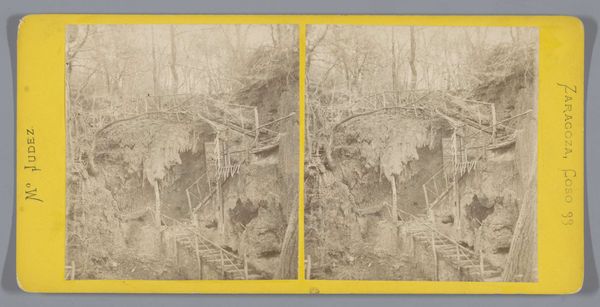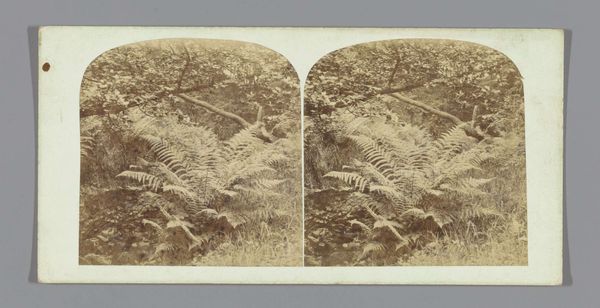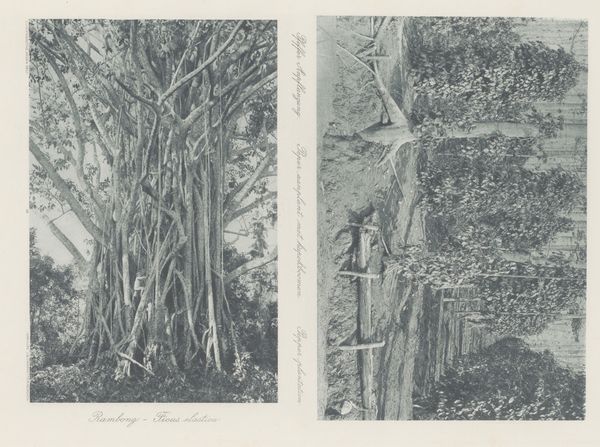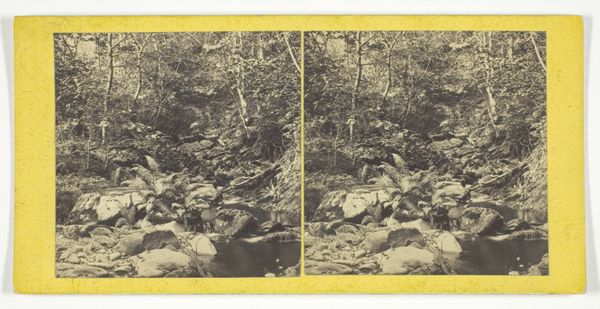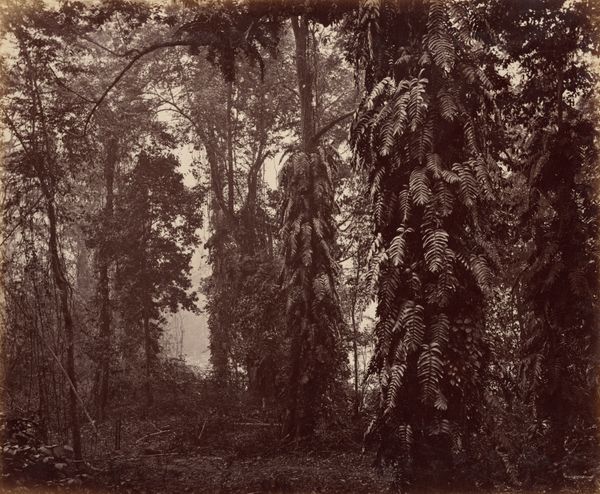
plein-air, photography
#
organic
#
plein-air
#
landscape
#
photography
#
realism
Dimensions: height 85 mm, width 175 mm
Copyright: Rijks Museum: Open Domain
Curator: Immediately, I'm struck by how lush and immersive this stereo photograph feels. The ferns in the foreground appear to almost reach out to the viewer. Editor: This photograph, titled "Vegetation along a path in Tasmania" by S. Clifford, offers a captivating glimpse into the Tasmanian wilderness, sometime between 1860 and 1880. Curator: Knowing it's a stereo photograph explains the depth! It makes sense why the composition guides our eye through those ferns and into the shadowed path. How would the conditions of labor and colonialism impacted photography like this, I wonder. Was it easy to haul such equipment to that place in that period? Editor: Absolutely. Let’s consider that this “plein-air” method also implies that the photographer's materials influenced their art. How portable were such technologies? Curator: It certainly influences the kind of work you can make. In the meantime, let's talk more about Clifford’s formal arrangement; how those ferns in the foreground act like curtains. They're almost symmetrically placed! The depth, and almost dreamlike contrast... Editor: Dreamlike is a good way to describe it. But, practically, who had access to these wilderness landscapes and how were they impacted in the process of that very extraction or labor is something important to consider as well. Who do you imagine as the ideal viewer of a photograph such as this? And what positionality that would take up during the period that it was shot and shared, which influences it to this day? Curator: The ferns are the heroes, surely. I imagine viewers responded to its capacity to transport you across an ocean, so in terms of aesthetic enjoyment, it's beautiful! This stereo card lets viewers perceive nature through crisp gradations in scale, tone, and space, no small feat during this era. Editor: Ultimately, this image demonstrates that technological development can be seen within its physical context and access and also allows for social questions to be raised in equal measure. Curator: I think this image speaks to our discussions of realism. Through texture and space, photography had potential as both an art form and as document, showing places some could never travel, or even imagine.
Comments
No comments
Be the first to comment and join the conversation on the ultimate creative platform.
